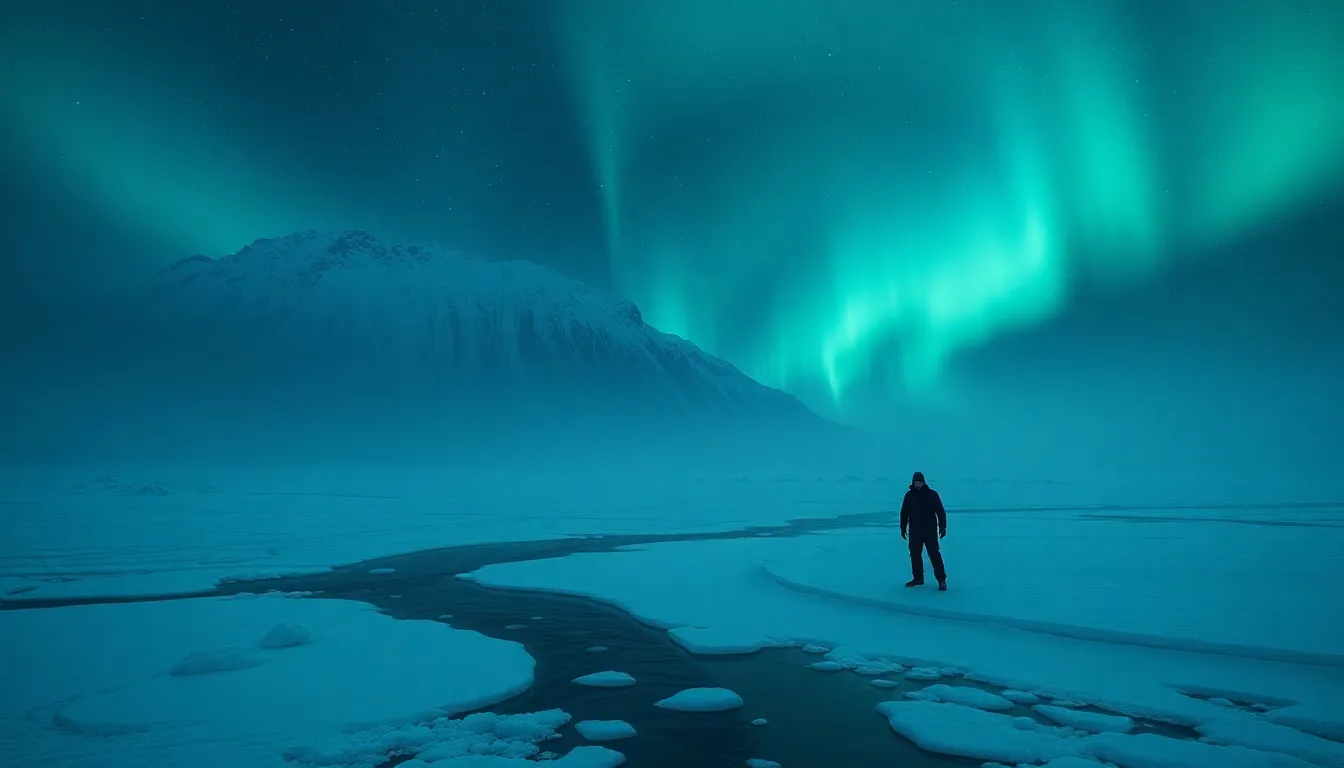The Floods of the Arctic: Tales from the Frozen North
Introduction: The Changing Landscape of the Arctic
The Arctic region, often viewed as the last frontier of our planet, is a place of stunning beauty and harsh conditions. It is significant not only for its unique ecosystems and biodiversity but also for its role in regulating global climate patterns. However, recent years have seen alarming changes in this frozen landscape, particularly the phenomenon of flooding.
Flooding in the Arctic is becoming increasingly common, driven by climate change and the rapid melting of ice caps. Understanding these changes is crucial for global climate discussions, as they serve as a barometer for climate health worldwide. The stories from this remote region offer insights into the broader implications of environmental shifts, not just for the Arctic, but for the entire planet.
The Science Behind Arctic Flooding
The factors contributing to flooding in the Arctic are complex and multifaceted. The primary drivers include:
- Climate Change: Rising global temperatures are causing ice caps to melt at unprecedented rates.
- Permafrost Thawing: The thawing of the permafrost leads to ground instability and can exacerbate flooding.
- Increased Precipitation: Changes in weather patterns have resulted in higher levels of rainfall, contributing to flooding.
Historically, the Arctic has experienced flooding events, but the frequency and intensity of these occurrences have escalated in recent years. This trend poses a significant threat to both the environment and the communities that inhabit the region.
Impact on Indigenous Communities
Indigenous peoples have lived in the Arctic for thousands of years, relying on the land and sea for their livelihoods. The changes in the landscape due to flooding are profoundly affecting their way of life. Personal stories from Indigenous communities reveal the depth of this impact:
- Loss of Traditional Hunting Grounds: Flooding has submerged traditional hunting areas, making it difficult for communities to access vital resources.
- Displacement: Some families have been forced to relocate due to rising waters and erosion of their homes.
- Cultural Disruption: The changing landscape threatens cultural practices and spiritual connections to the land.
These narratives highlight not only the immediate physical impacts but also the emotional and cultural ramifications of flooding in the Arctic.
Wildlife and Ecosystem Disruption
The effects of flooding extend beyond human communities to the delicate ecosystems of the Arctic. Wildlife habitats are being altered, leading to disruptions in food sources and breeding grounds. Some examples include:
- Polar Bears: As ice melts and flooding increases, polar bears find it harder to hunt seals, their primary food source.
- Bird Migration Patterns: Flooding can destroy nesting sites, affecting migratory bird populations.
- Marine Life: Changes in salinity and temperature due to flooding can disrupt marine ecosystems, affecting species diversity.
This interconnectedness of ecosystems underscores the urgent need for climate resilience strategies that take into account the ripple effects of flooding.
Local Narratives: Tales from the Frozen North
The personal accounts of residents and explorers provide a vivid picture of the dramatic changes in the Arctic environment. These stories often serve as powerful reminders of the region’s fragility and the resilience of its inhabitants:
- A Fisherman’s Tale: A local fisherman recounts how once-reliable fishing spots have become unrecognizable due to flooding, impacting his family’s livelihood.
- An Explorer’s Reflection: An explorer shares their experiences of witnessing the rapid thawing of glaciers, which were once stable formations.
Storytelling plays a crucial role in preserving the history of the Arctic and raising awareness about the impacts of climate change.
Adaptation and Resilience Strategies
As flooding becomes a more frequent occurrence, communities are developing strategies to adapt and build resilience. Some of the innovative approaches include:
- Infrastructure Improvements: Building elevated homes and flood barriers to protect communities from rising waters.
- Environmental Management: Restoration of natural wetlands to absorb excess water and mitigate flooding.
- Utilizing Traditional Knowledge: Indigenous wisdom is being integrated into modern practices for sustainable land and resource management.
These efforts highlight the importance of resilience in the face of ongoing environmental challenges.
The Role of Government and Policy
Government and policy responses to Arctic flooding are critical for effective disaster management. An examination of local and international policies reveals both successes and gaps:
- Disaster Response Strategies: Some regions have implemented comprehensive response plans that include community engagement and resource allocation.
- Inclusivity in Policy-Making: Including Indigenous voices in the decision-making process is vital for culturally relevant and effective policies.
However, challenges remain, particularly in ensuring that policies are adequately funded and enforced.
Global Implications of Arctic Flooding
The implications of flooding in the Arctic extend far beyond its borders. Key points to consider include:
- Global Climate Patterns: The Arctic plays a crucial role in regulating the Earth’s climate, and changes here can have cascading effects worldwide.
- Rising Sea Levels: Flooding and melting ice contribute to rising sea levels, threatening coastal cities around the globe.
- Climate Change Indicator: The Arctic serves as a bellwether for climate change, with changes in this region mirroring broader environmental trends.
These factors underscore the global significance of addressing the challenges posed by Arctic flooding.
Future Projections: What Lies Ahead for the Arctic
Looking ahead, scientific predictions for the Arctic suggest a grim future if current trends continue:
- Increased Flooding Events: Projections indicate that flooding will become more frequent and severe.
- Long-term Ecosystem Changes: Continued flooding will likely result in irreversible changes to the Arctic ecosystem.
- Climate Action Scenarios: Scenarios outlining the consequences of climate action versus inaction illustrate stark differences in outcomes for the region.
These projections highlight the urgency of addressing climate change and its impact on the Arctic.
Conclusion: A Call to Action
The significance of understanding Arctic flooding cannot be overstated. It serves as a critical reminder of the interconnectedness of our planet and the urgent need for collective action. As we engage with the issues surrounding climate change, we must remember the voices of those affected, particularly Indigenous communities whose lives and cultures are intricately tied to this fragile environment.
As stewards of the Earth, it is our responsibility to advocate for policies that protect the Arctic and its inhabitants, ensuring that this unique region is preserved for future generations. The time to act is now.



